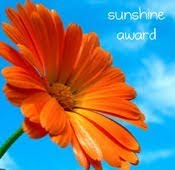- Buoyancy of the ‘beauty bubble.’ Despite an ailing recession, the U.S. cosmetic and toiletries sector generated more than $10 billion in revenue last year from 13,000 beauty-centered stores nationwide, according to Ibis World Reports. How will the industry remain recession-proof?
- The burgeoning men’s cosmetics sector. American consumers spent $4.8 billion on men’s grooming products in 2009, according to market data firm Euromonitor International. In 1997, the figure was half that — $2.4 billion. Fastest growing men’s segments is skin care (nonshaving products like facial cleansers, moisturizers and exfoliants), with the category growing more than fivefold over the period, to $217 million from $40.9 million. A 2009 report by market research firm Packaged Facts also expressed optimism for the men’s cosmetics sector.
- Role of ‘emotional bond’ in consumer loyalty to cosmetic brands. Cosmetic brands scored high on a Brand Keys “Loyalty Leaders” report, which found that, even in a bad economy, consumers stick with their favorite premium cosmetic brands alongside cheaper ones, also noting the emotional connection forged with cosmetic brands is due to impact on self-image.
- Why cosmetics top the list of shoplifted goods. "Health and beauty care items" accounted for 20 percent of all items stolen from supermarkets in 2008, according to a survey from the Food Marketing Institute, with Oil of Olay skin creams topping the list of swiped items.
- Youth and cosmetics. According to The NPD Group Inc., in 2005 the average age a woman began using beauty products was 17; today it is 13.7. Experian Market Research shows that 43% of six- to nine-year-olds are already using lipstick or lip gloss, 38% use hairstyling products and 12% use other cosmetics (J. Bennett: Newsweek article “Generation Diva”).
- Cosmetic buying habits related to perceived health and safety concerns. According to Datamonitor, 28% of consumers currently deliberately avoid certain cosmetics or toiletries because of fears over certain ingredients, and 39% are somewhat or extremely concerned about parabens or petrochemicals used in beauty product formulations. FDA statistics confirm that cosmetics are one of the safest categories of products used by Americans: With more than 11 billion personal care products sold each year, only 150 adverse experiences (mostly skin rashes or allergies) have been reported.
- How being ‘green’ affects consumer spending in the cosmetic category. According to Grail Research, a full 93% of consumers feel that a company being green is important to their purchase decision, with 80% of consumers citing “natural” as the most important green attribute for cosmetic/toiletry products. According to the U.S. Census Bureau's 2008 Annual Survey, manufacturers of beauty products consumed less than a third of the kilowatt hours of electricity relative to the average of other U.S. manufacturers. However, most are either not aware or cannot recollect companies' green initiatives.
- The importance of socially conscious business practices. Consumers also value brands that support causes—85% of Americans have a more positive image of a product or company when it supports a good cause. The cosmetics industry is very involved in philanthropy and contributes twice as much to charitable causes than any other industry. Each year, beauty companies donate over one million individual products and raise more than $2 million for cancer patients through the Look Good... Feel Better Program.
About the Expert
Throughout his career Edward (“Ed”) Schack has managed accounts for billion dollar businesses; has overseen global sales, marketing, manufacturing, and distribution campaigns; and now owns and operates a multi-million dollar company, EES Cosmetic Solutions. An award-winning business man with an enduring legacy of success over his 25-year career, Ed has established EES Cosmetic Solutions as one of the northeast’s most robust independently-owned manufacturer’s representatives and distributors to the cosmetic and personal care industries. Serving as company CEO and Sales EVP since founding the firm in 2004, Ed has grown EES Cosmetic Solutions into an industry leader with several nationally-known brand names as clients or principals, including Bayer. Ed has spent more than two decades in the cosmetics industry working for various firms with much success. Career highlights include increasing sales over 700%; managing top accounts such as Estée Lauder, Loreal, Avon, and Proctor & Gamble; and directly managing staff teams in Canada, East Asia, Australia, and Europe.
About EES Cosmetic Solutions, Inc.
Since 2000 EES Cosmetic Solutions has served as manufacturer’s representative and distributor to the cosmetic, personal care and household industries. The company represents global industry leaders who meet the most strict industry requirements. Many of the companies represented by EES have earned ISO, Kosher, and Organic certifications along with cGMP. Learn more online at www.EESCosmetic.com.

























2 comments:
Hi guys,
This post is very useful and very interesting to read. Really, this post is providing nice tips.
Keep it up!!!
4VOO Reviews
Thanks so much for sharing such great facts - helped me a lot with my media coursework (based on the cosmetics industry).
Post a Comment